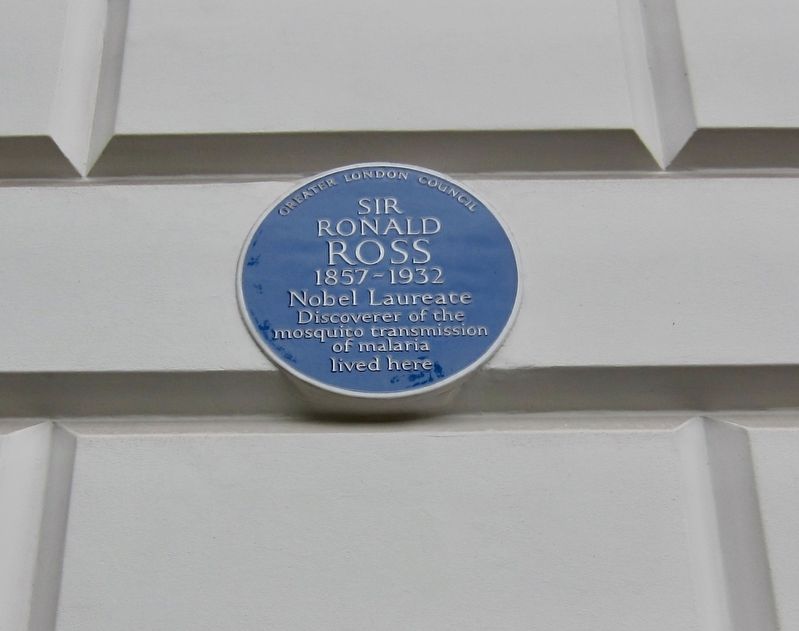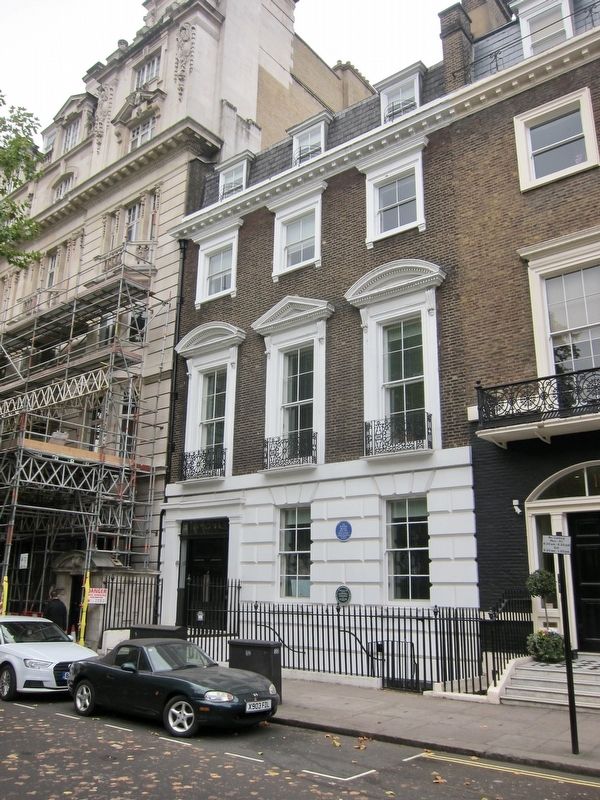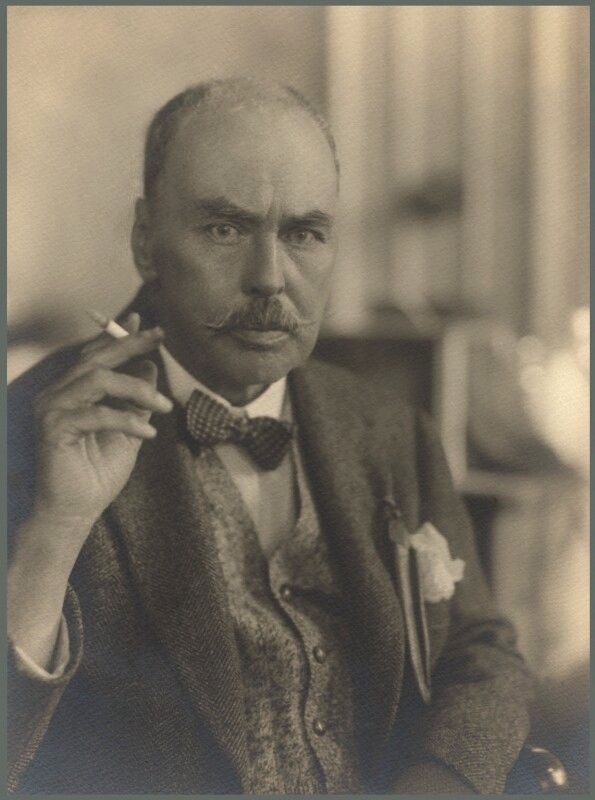City of Westminster in Greater London, England, United Kingdom — Northwestern Europe (the British Isles)
Sir Ronald Ross
1857 - 1932
Discoverer of the
mosquito transmission
of malaria
lived here
Erected 1985 by Greater London Council.
Topics. This historical marker is listed in this topic list: Science & Medicine. A significant historical date for this entry is May 13, 1857.
Location. 51° 30.993′ N, 0° 8.764′ W. Marker is in City of Westminster, England, in Greater London. Marker is at the intersection of Cavendish Square and Wigmore Street, on the left when traveling north on Cavendish Square. Touch for map. Marker is at or near this postal address: 18 Cavendish Square, City of Westminster, England W1G 0PJ, United Kingdom. Touch for directions.
Other nearby markers. At least 8 other markers are within walking distance of this marker. Josef Dallos (a few steps from this marker); George Edmund Street (within shouting distance of this marker); Sir Jonathan Hutchinson (within shouting distance of this marker); Herbert Henry Asquith (within shouting distance of this marker); Cavendish Square (within shouting distance of this marker); Sir Frederick Treves (about 120 meters away, measured in a direct line); Quintin Hogg (about 150 meters away); Sir George Frederic Still (about 180 meters away). Touch for a list and map of all markers in City of Westminster.
Also see . . . Ronald Ross. "Sir Ronald Ross KCB KCMG FRS FRCS (13 May 1857 – 16 September 1932), was a British medical doctor who received the Nobel Prize for Physiology or Medicine in 1902 for his work on the transmission of malaria, becoming the first British Nobel laureate, and the first born outside Europe. His discovery of the malarial parasite in the gastrointestinal tract of a mosquito in 1897 proved that malaria was transmitted by mosquitoes, and laid the foundation for the method of combating the disease. He was a polymath, writing a number of poems, published several novels, and composed songs. He was also an amateur artist and natural mathematician. He worked in the Indian Medical Service for 25 years. It was during his service that he made the groundbreaking medical discovery. After resigning from his service in India, he joined the faculty of Liverpool School of Tropical Medicine, and continued as Professor and Chairman of Tropical Medicine of the institute for 10 years. In 1926 he became Director-in-Chief of the Ross Institute and Hospital for Tropical Diseases, which was established in honour of his works. He remained there until his death." (Submitted on December 13, 2017.)
Credits. This page was last revised on January 27, 2022. It was originally submitted on December 13, 2017, by Andrew Ruppenstein of Lamorinda, California. This page has been viewed 129 times since then and 3 times this year. Photos: 1, 2, 3. submitted on December 13, 2017, by Andrew Ruppenstein of Lamorinda, California.


